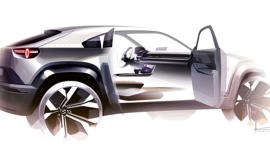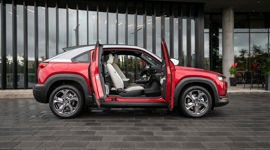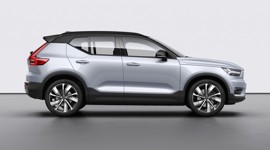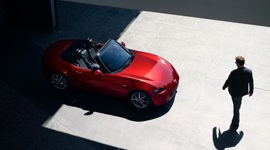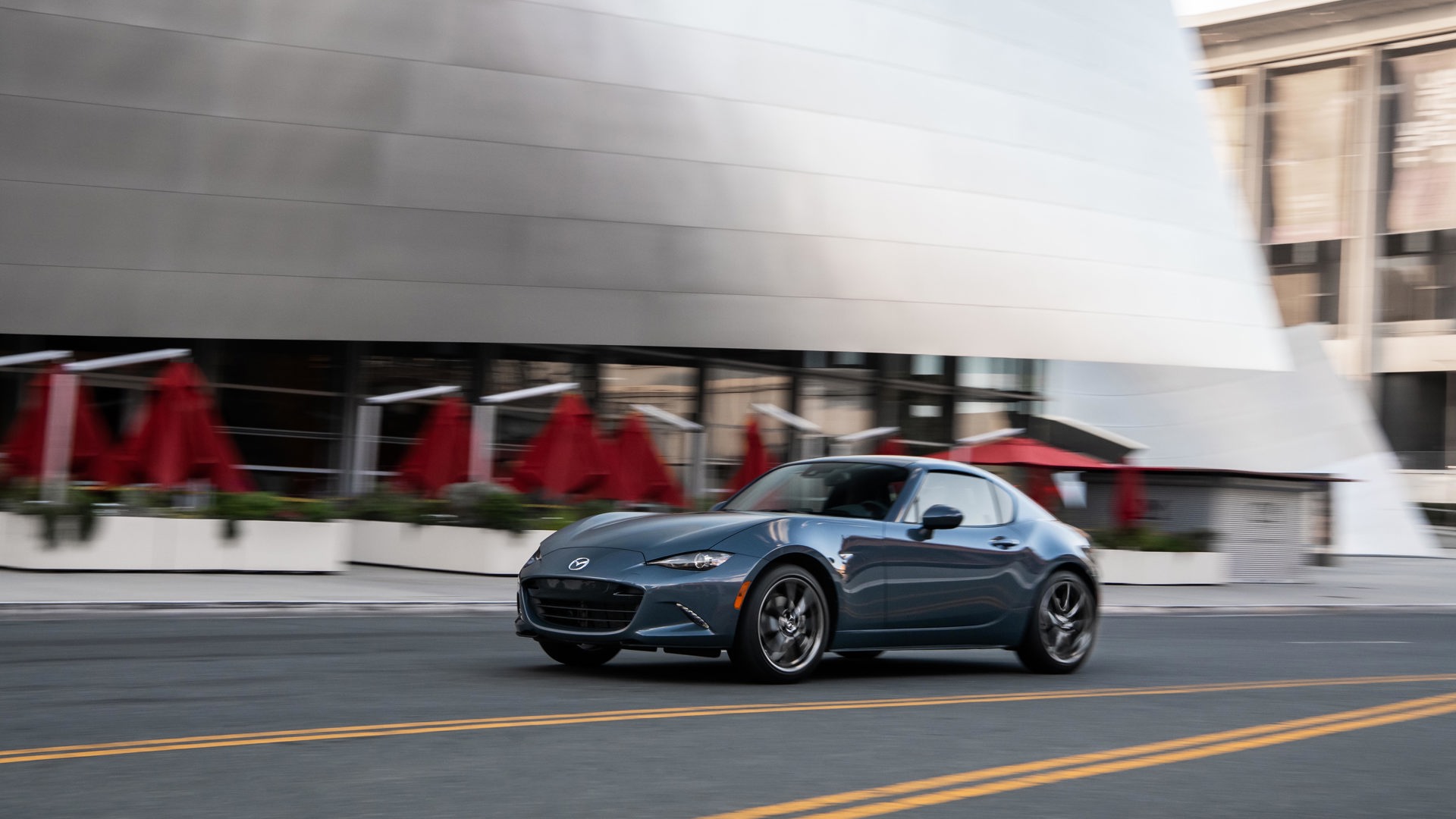When you have a reputation for great design like Mazda does, it’s never easy to introduce an all-new product in a relatively new market segment. While most design is about standing out, a brand-new product must hint at hidden depths once it has your attention. This balance was key for Mazda when it penned the new MX-30, the Japanese automaker’s first production electric vehicle.
Introduced last fall at the Tokyo Motor Show, the MX-30 is a small crossover with a coupe-like profile. While crossovers have by and large taken the place of the traditional sedan – swoopy crossovers are particularly in vogue – among EVs, there’s another commonality: efficiency over all else. The aerodynamic wedge-like shape shared by many hybrid and electric vehicles currently on the market dates back to the original Prius; in crossovers, it’s much the same look, just a bit taller and longer – just look at upcoming EV crossovers like the Ford Mustang Mach-E, Polestar 2, and Volkswagen ID.4, for example.
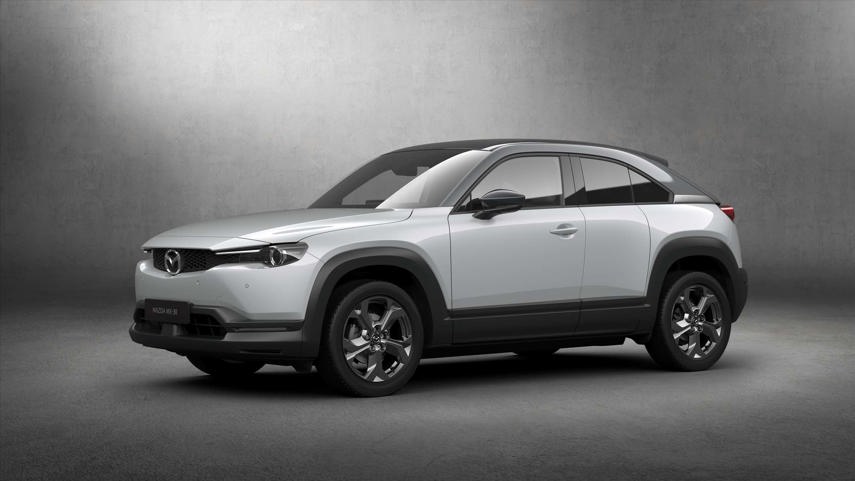
The Mazda MX-30 strays a bit from this formula, and even from the brand’s own design language, which usually emphasizes an elegant and streamlined profile.
“The MX-30 is a bit of an outlier because we didn’t want to go the route of sleek and sporty,” Julien Montousse, Senior Director of Design at Mazda North America, said in a digital rountable. Even when describing the new CX-30 subcompact crossover on which the MX-30 is based, Mazda designers leaned on the brand’s sleek-and-sporty visual signature, pointing out how the blacked-out fender flares help the vehicle look slimmer, like a sports car.
But when looking at the range of EVs on the market, Montousse found a lot of similarities: “We realized within the electrification space, many competitors are showing something that is very efficient-looking.”
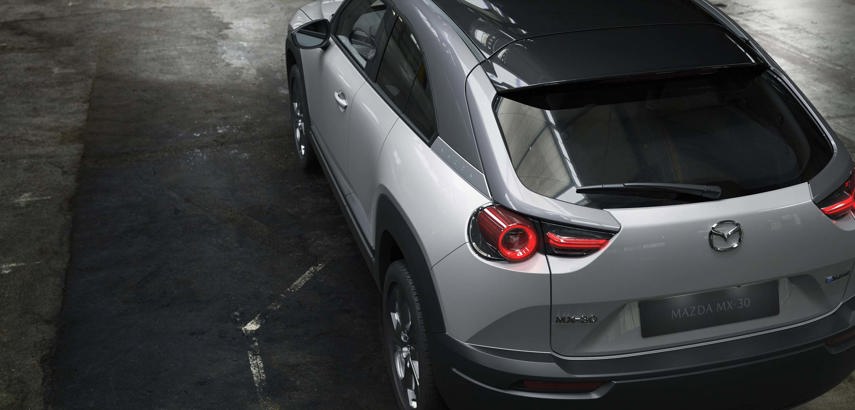
He mentions the profile of the Toyota Prius, which is also found on other efficiency-focused vehicles like the Hyundai Ioniq and Honda Insight. “We wanted to take a different route for Mazda,” he says.
For many, it's easy to point out electric cars on the road these days thanks to their almost cookie-cutter styling. They all feature minimalist designs that help them slip through the air with minimal drag. And why not? The shape improves an EV’s range – the most important metric to EV buyers, it seems – and directly benefits the driver’s wallet.
However, Mazda is trying to showcase other aspects of its EV design in the MX-30, tempering aerodynamics with “utilitarian benefits and features,” Montousse says. “We worked hard on the suicide doors, and the ground clearance is a bit higher [than you would expect in an EV].”
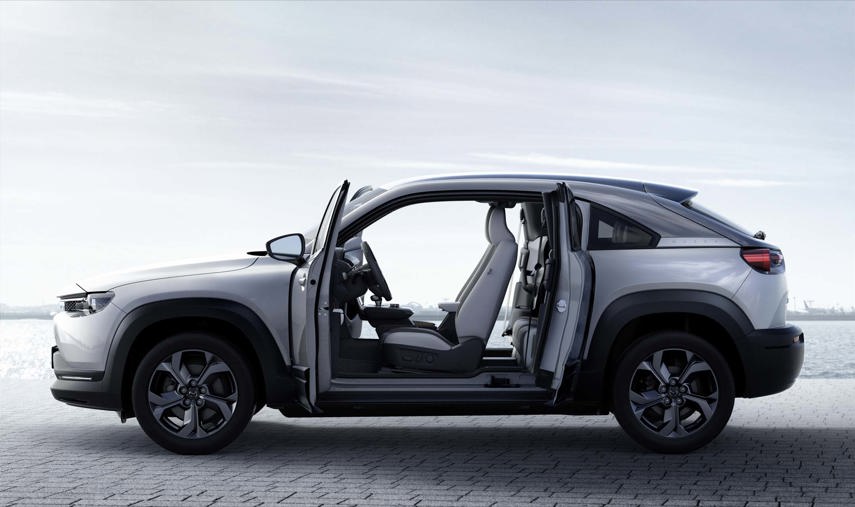
“We wanted to have a little bit more than the electric car message,” Montousse says. “We wanted to take advantage of what we learned with our SUVs and how practical they are, and we packaged it this way in a smaller electric platform.”
The MX-30’s rear-hinged rear doors are more than a stylistic affectation; they make it easier to load passengers and access car seats. They could also be seen as a sly homage to the RX-8, a 2+2 sports car with similar rear doors. Another RX-8 connection: It was Mazda’s last vehicle with a rotary motor and the MX-30 may get its own rotary motor as a range extender.
Historical nod aside, the MX-30 is directly descended from the brand’s range of SUVs – including the CX-30, CX-5, and CX-9 – which have opened people’s eyes to how premium Mazda’s interiors have become: sweeping contours, elegant wood accents, and swathes of leather.
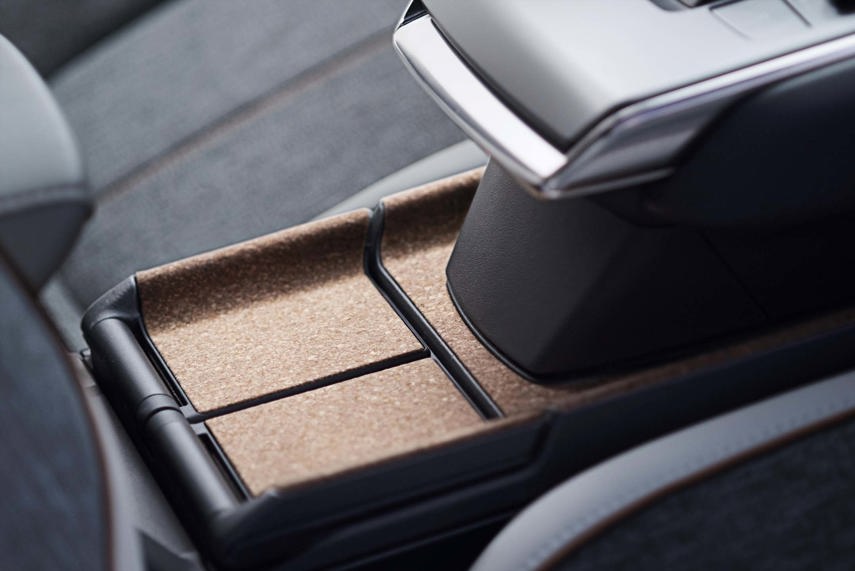
The MX-30 features some of these touches as well, but in a way that better suits the ethos of an electric vehicle. Rather than use the aforementioned wood accents, the MX-30 sports reclaimed cork bark, which is a low-impact material – though this could be another Easter egg, referencing Mazda’s roots as the Toyo Cork Kogyo company. The automaker is also promising vegan alternatives for interior surfaces. This is becoming a more popular trend, though it’s still unusual for non-luxury brands like Mazda.
Lately, the automaker has been exploring a more abstract process to designing its vehicles. It’s always interesting and exciting to see where designers get their inspiration from, but with the MX-30, Mazda chose to stray a bit further from its abstract exercises, choosing to portray practicality over sheer emotion. In the words of Montousse, he wanted to “provide a utilitarian benefit to the vehicle,” rather than saying that all EVs need to look a certain, efficient way.
